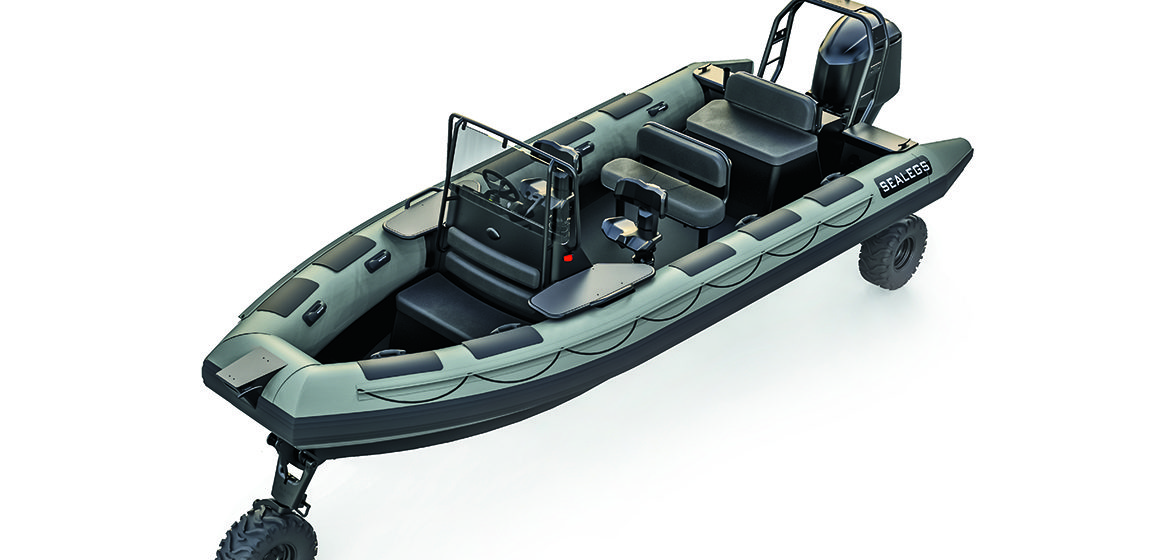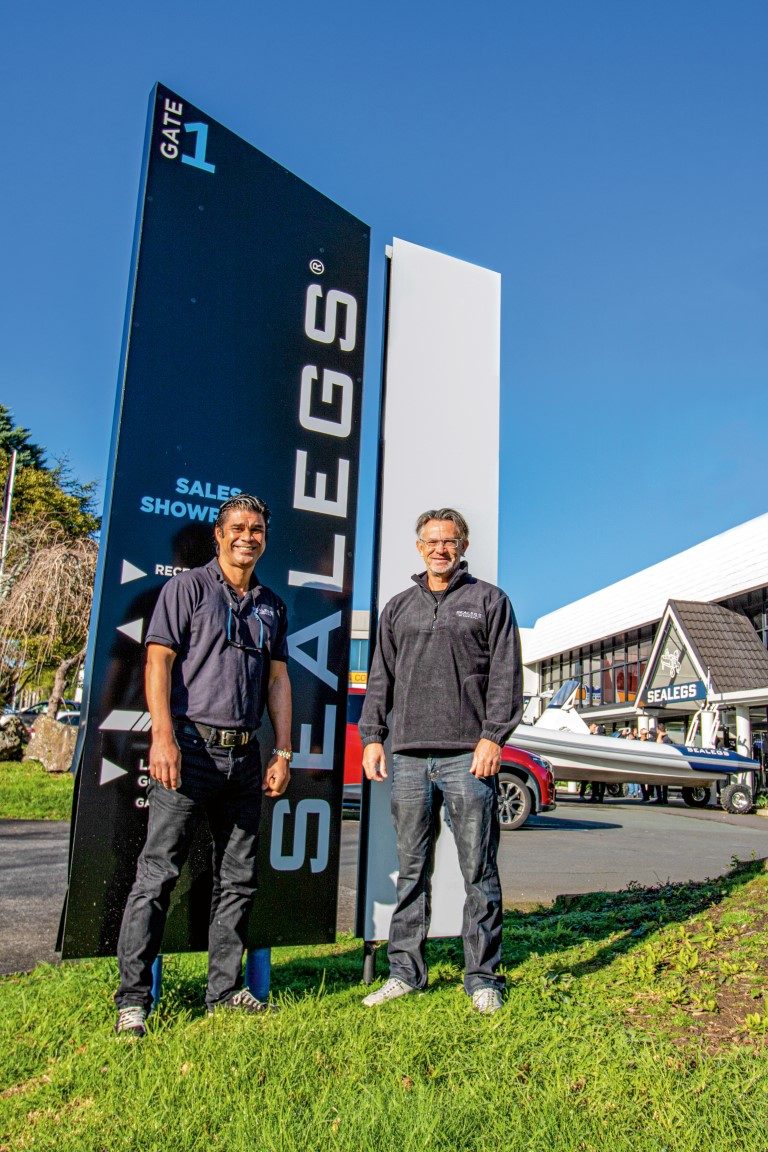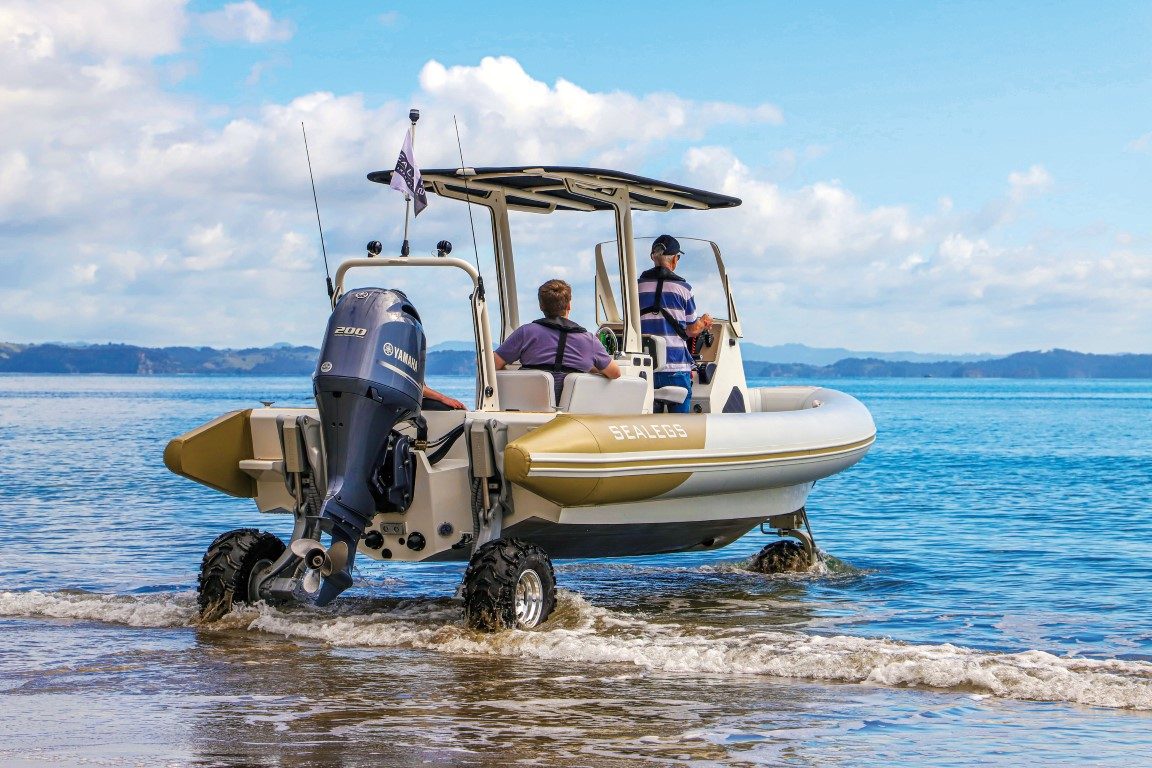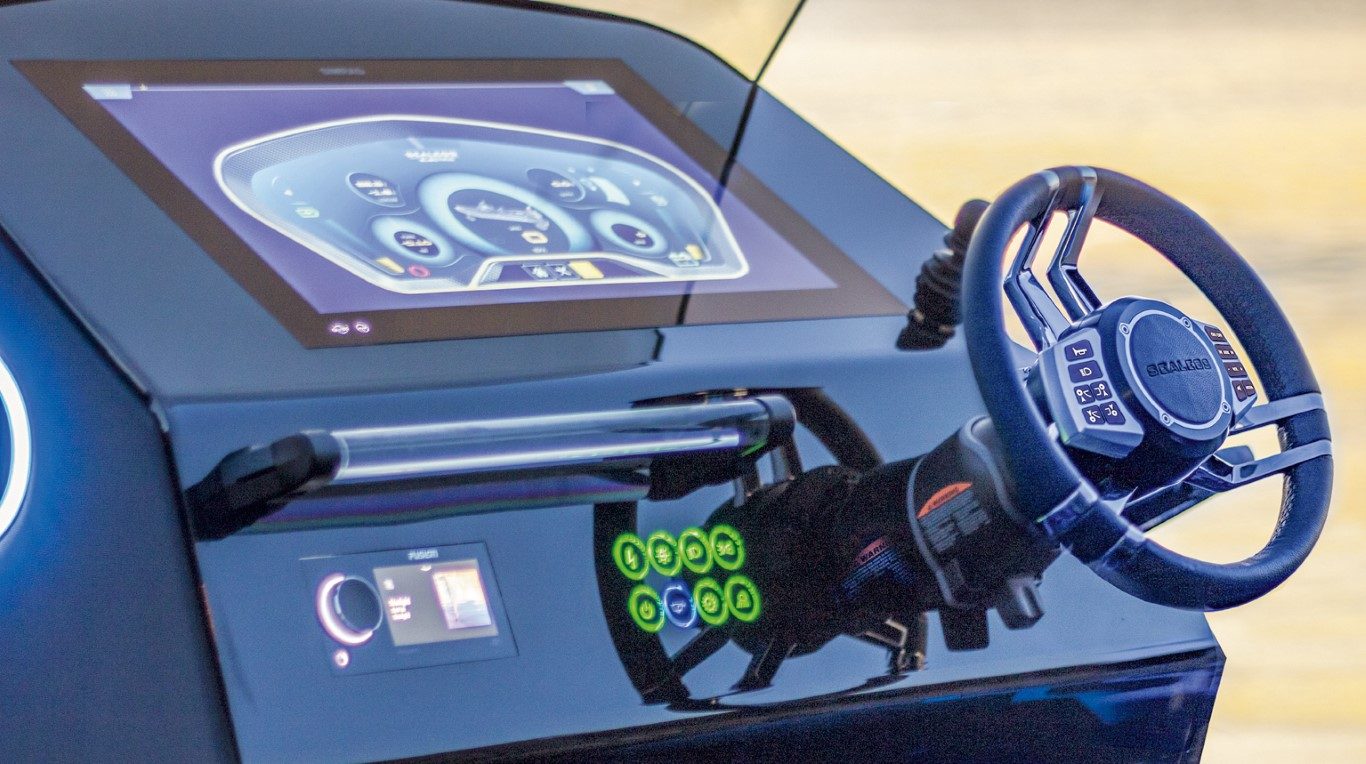

July 2020 marked a major milestone for amphibious boat manufacturer Sealegs – the completion of the 1,500th boat since the company’s formation over 15 years ago. This latest vessel – a heavily-customised 7.7m RIB – was built by an adventurous company for an adventurous man. Story by Lawrence Schäffler.
he amphibious RIB was produced for British adventurer Bear Grylls – it’s his third Sealegs – and will, like its predecessors, serve as a constant companion for his outrageous TV exploits. “We like to think we build adventurous boats for adventurous people,” says Sealegs CEO David McKee Wright, “and they don’t come much more adventurous than Bear.
“Adventure sums up the entire Sealegs ethos – our boats take people to places other boats can’t. And while aligning our 1,500th vessel with Bear Grylls is a great way to celebrate the milestone, it’s also an endorsement of the constant evolution and innovation that’s shaped – and continues to shape – our development.”

The most recent phase of the evolution, he says, has been an increase in the design and special projects team, and the investment in resources within the company has been aligned with this. Sealegs has an extensive team of engineers designing, testing and refining – not just for improved aesthetics, but for the precise, efficient manufacturing of its components by its partner organisations.
“Moving to a more customer-focussed structure has given us more time and energy to focus on our core expertise – design and new product development. A key outcome is the adoption of a ‘modular’ design concept – where the same components can be used for different models. While this has streamlined manufacturing and assembly, it’s also given buyers much more flexibility in customising boats to their preferences.”
Similarly, adopting CNC profile cutters for the aluminium sections of hulls has resulted in much faster assembly – with the greater accuracy and repeatability culminating in an even better product.
“We also (in 2017) embarked on a number of strategies that underpin our ability to innovate more freely and explore new markets. Among these was the acquisition of Lancer Inflatables, a move which drove the design for more functional and aesthetically-attractive tubes.”

In the same year the company formed an international consortium – providing an avenue to new markets, particularly in the industrial and military sectors. The consortium – Future Mobility Solutions (FMS) – acquired French RIB manufacturer S.A.S. Sillinger and US boatbuilder Willard Marine Inc. Both are established heritage brands in the European and US military markets.
“FMS is positioned to significantly increase revenues and profitability through a greater international infrastructure,” says McKee Wright. “We’re building a wider range of products, with more international distribution channels.” Some 70% of Sealegs’ production already heads offshore – mainly to Europe and North America.
User Experience
But perhaps the most important facet of the company’s development philosophy relates to the way the Sealegs boats are experienced by users – a function of digital technology.
“I call it ‘invisible’ technology,” says McKee Wright, “because users don’t see it. At its core is a programmable logic controller (PLC) which makes the Sealegs experience simpler, friendlier and more intuitive. We’ve labelled it AMPTRACS – Amphibious Traction and Control System.” Until relatively recently AMPTRACS has been the domain of the larger Sealegs models –
it is now being rolled out across the range.
Sealegs’ propriety software runs on the PLC and interfaces seamlessly – thanks to NMEA inputs and ports – with accessories such as the engines (outboard and drive engine), depth sounder, stereo and VHF – integrating and presenting the information on the boat’s touch-screen multi-function display (MFD). It certainly makes for a clean, uncluttered dash – and clean, uncomplicated operation.

“Previously, the operator would be making judgments about driving on/off the beach. Now with PLC technology – and an array of sensors – it’s more automated. The system decides when the wheels need to be deployed, when to tilt the outboard up/down, and when to start/shut down drive-engine. The speedo switches automatically between knots and km/h. The transition between water and land is far more seamless.”
A good illustration of the technology’s integration is the steering wheel. The helm now steers both the outboard and the front drive wheel – and steering wheels are now equipped with ‘wings’ linked to a range of functions. Effectively, all vessel functions can be presented on and controlled from the MFD. Crucially, this allows Sealegs to set up each boat precisely the way the client wants it. Buying a Sealegs has become much more ‘personalised’.
Another benefit of the digital technology, adds McKee Wright, is the ‘design flexibility’ it offers – a greater emphasis on performance and ergonomic factors. Consider the drive engine (a 25hp twin-cylinder, air-cooled, four-stroke Honda). Previously mounted near the aft end of the vessel, it’s now forward, under the helm console.
The result is a far more spacious cockpit and better weight distribution (trim) across the boat. And with better access to the drive engine it also makes for easier servicing.
Product Development
While Sealegs vessels can be found in more than 55 countries around the globe, the company is active in a range of new markets with new applications.
“We’ll continue building our models for the recreational market,” says McKee Wright, “but we’re also working on numerous new designs for commercial and military applications.”
A recent recreational development is a new option of the latest Sealegs 7.5m RIB, which morphs the craft from a center console to a full, wrap-around console with retractable windscreen and offset steering.

This provides comfort and protection from the elements while retaining the sleek styling and superior on-water performance of the new model. It will be displayed at the Auckland Boat Show in October. On the commercial side, the team is busy working on some larger projects which are still strictly ‘under wraps’ until completion in the coming months.
Some 1,500 boats on, says McKee Wright, Sealegs is in a ‘great space’. “We’re agile and innovative. Many of our team of 88 people started with us 15 years ago – so there’s a very deep pool of experience and plenty of organic creativity. There’s a lot of opportunity out there – and Sealegs has the credibility and the largest range to make the most of it.




